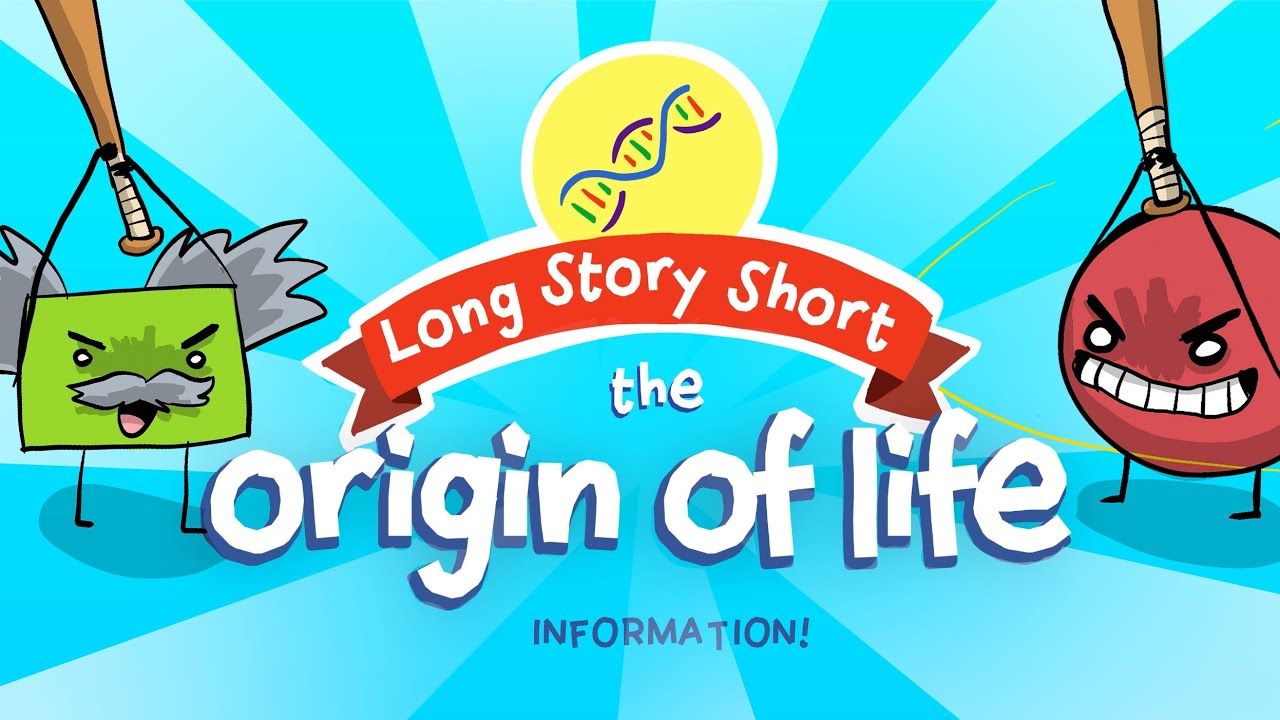Origin of Life: Information
Long Story Short, Ep. 11 View at YouTubeLife depends on information, but can unguided material processes produce the information needed for the first life? This episode of Long Story Short shows why unguided natural mechanisms can’t produce new biological information, and therefore can’t explain the origin of life.
REFERENCES AND NOTES
1. Sara Walker & Paul Davies, The Algorithmic Origins of Life, 10 J. Royal Society Interface 1 (2013) https://royalsocietypublishing.org/do….
2. Technically, the term “information” represents a decrease in uncertainty. Now that we have conveyed this information, you should be less uncertain.
3. See: https://www.bbc.com/news/uk-england-t…
4. This is related to the concept of “specified” information, but it is not “complex”.
5. OK, a snowflake isn’t exactly “repetitive”. Technically, its shape could convey information about the temperature and water vapor concentration that formed its crystal structure. But, this “information” is minimal and does not “do” anything.
6. This is related to the concept of “complex” information, but it is not “specified”.
7. A completely random sequence, once it is known, technically conveys “syntactic” or Shannon information. It’s useless, but technically “information” according to Shannon.
8. The formal concept of Complex Specified Information includes messages like the Gettysburg Address that could not be produced by random processes, given the entire probabilistic resources of the universe. We’ll try to keep this simple by avoiding probabilities.
9. …and the other required information found in the elements of life.
10. Importantly, physics and chemistry do not specify any particular ordering of the nucleotides in DNA or RNA. Any ordering is equally likely to occur, unless it is somehow guided. The matter does not create information on its own.
11. Coding for proteins is useless unless a cell already has protein manufacturing machinery. The code to produce the protein manufacturing machinery is immense: In the simplest known life, JVCI Syn3A, this functionality alone requires 149 genes and more than 100,000 base pairs of DNA!! Breuer M, et al. Essential metabolism for a minimal cell. eLife, 2019. 8.
12. Zhang F. Differential arginylation of actin isoforms is regulated by coding sequence-dependent degradation. Science 2010; 329: 1534-1537.
13. Lasa I, Toledo Arana A, Gingeras TR. An effort to make sense of antisense transcription in bacteria. RNA Biol. 2012; 9: 1039-1044.
14. Stergachis AB. Exonic transcription factor binding directs codon choice and affects protein evolution. Science 2013; 342: 1367-1372. 15. Feltens R. An unusual mechanism of bacterial gene expression revealed for the RNase P protein of Thermus strains. PNAS 2003; 100: 5724-5729.
16. Lynn Helena Corporale. The Implicit Genome. p. 21 Oxford University Press, © 2006.
17. Joyce GF. Forty years of in vitro evolution. Angew Chem Int Ed. 2007; 46: 6420-6436. Doi: 10.1002/anie.200701369.
18. See previous Long Story Short videos for more information.
19. Kun A, Sandos M, Szathmary E. Real ribozymes suggest a relaxed error threshold. Nature Genetics 2005; 37: 1008-1011.
20. Tjhung KF, Shokhirev MN, Horning DP, Joyce GF. An RNA polymerase ribozyme that synthesizes its own ancestor. PNAS 2020; 117: 2906-2913.
21. Winkler WC, et al. Control of gene expression by a natural metabolite-responsive ribozyme. Nature, 2004; 428: 281–286.
22. (a) Zhang W, et al., Engineering the ribosomal DNA in a megabase synthetic chromosome. Science 2017; 355: 6329. (b) Iida T, Kobayashi T, RNA Polymerase I Activators Count and Adjust Ribosomal RNA Gene Copy Number. Mol Cell. 2019; 73: 645-654.
23. “Methodological naturalism” only allows purely natural explanations to be considered in a scientific investigation. As a result, science only seeks the best natural explanation, not the absolute truth.
